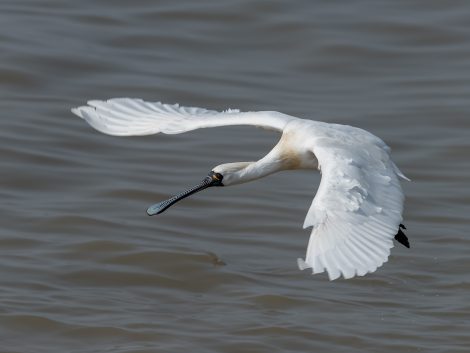The impact of widespread animal diseases on wildlife

Diseases already affecting domestic animals worldwide – including African swine fever (ASF) and high pathogenicity avian influenza (HPAI) – are endangering wildlife too, reminds a new report, posing a significant threat to biodiversity and jeopardising efforts to eradicate these diseases.
These findings emerge from the latest Wildlife Diseases Situation Report by the World Organisation for Animal Health (WOAH), the periodic publication that analyses data from the World Animal Health Information System (WAHIS), the platform developed by WOAH to collect and publicly share global animal health data.
Between January and June 2024, 55 countries and territories have reported 3,800 outbreaks in wildlife, with over 11,500 cases registered and 151 wildlife species affected by eight diseases. Ten percent of these species are at risk of extinction according to the International Union for Conservation of Nature (IUCN). HPAI and ASF – two of the diseases that have the biggest impact on domestic animals – were also responsible for most of the outbreaks reported: 659 and 2,863 respectively.
HPAI threatens animals at risk of extinctions
HPAI has led to the death and mass slaughter of over 557 million poultry worldwide between 2005 and 2023 and in 2024 it was detected in the Antarctic region for the first time.

Several animal diseases threaten wildlife, but HPAI proved to be particularly dangerous for animals at risk of extinction. In fact, it affected 13 out of 15 species at risk mentioned in the report, with particularly alarming cases reported in Chinese Taipei, where five black-faced spoonbills – whose population is estimated at 2,200 adult animals – died. Other notable cases include a case in a saker falcon in Hungary (estimated population between 12,200 and 29,800) and cases of 12 jackass penguins in South Africa (with an estimated population of 41,700, existing only in southern Africa).
While HPAI usually affects domestic and wild birds, it has also been found in several species of wild mammals, raising concern about its increasing capacity to spill over between species and its zoonotic potential. Experts have closely monitored this over the years. To date, HPAI has only occasionally affected humans: mostly people working or living in close contact with animals, with limited capacity of human-to-human transmission.
The far-reaching impact of ASF on wildlife
African swine fever (ASF) is the most widespread disease in wildlife, in term of outbreaks reported to WOAH during the period, and the second most impactful on animals at risk of extinction (1 out of the 15 species at risk of extinction).

ASF currently affects millions of pigs and boars all over the world. With its significant death toll and the connected containment measures – including restrictions on animal movement and trade – ASF poses a global threat to livestock and food security. It is also becoming more difficult to eradicate, since a sylvatic (wildlife-based) epidemiological cycle has been established in many regions of the world, the report notes.
In the Philippines, 24 Visayan warty pigs, a species surviving until today on few islands of the archipelago, have died due to ASF. WOAH warns that from a broader perspective the reduction of wild suids could be an ecological issue not only in terms of conservation, but also because of a potential increase in tensions between major predators, facing restricted access to food in their natural environment.
The report highlights the underlying interdependence between ecosystems. The health of wildlife is deeply entwined with the health of other animals, the environment and even humans. By reporting and monitoring diseases across the animal health spectrum, we safeguard livestock, food security, biodiversity, and human health – ultimately investing in a healthier, more sustainable future.
